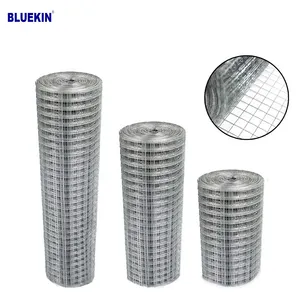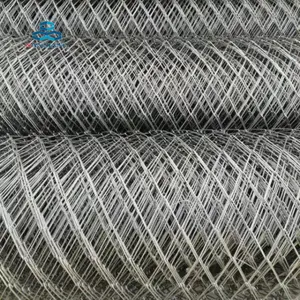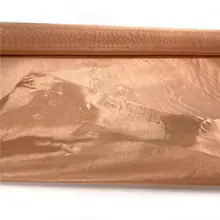Popular in your industry











































































Related Searches:























































































































































Top categories
About wire mesh for concrete
Introduction: An Overview of Concrete Reinforcement
This article serves as an ultimate guide to using wire mesh in concrete reinforcement. It aims to provide an in-depth understanding of wire mesh and its benefits, exploring different types, comparing it with other reinforcing materials, and walking you through the actual steps of using wire mesh in concrete preparation. Furthermore, the article discusses the best applications for wire mesh and sheds light on common pitfalls to avoid during its use.
Why Wire Mesh? Understanding Its Role and Benefits
Welded Wire Reinforcement (WWR), also known as Wire Mesh, is made from steel. The wire mesh is inserted into the concrete mixture to provide support and help prevent chips, cracks, and crevices from forming. Wire mesh provides added strength, flexing as the concrete expands and contracts, helping to prevent damage. Moreover, wire mesh may save on installation time and labor compared to rebar. Wire mesh is well-suited for residential applications, preventing cracking in driveways, walkways, and other paved areas.
Types of Wire Mesh: An Informative Look at Options
Basic types of wire mesh include Concrete Reinforcing Mesh, Concrete Wire Mesh, Concrete Slab Mesh, and Reinforcing Rib Mesh. Others include Reinforcing Trench Mesh, Reinforcing Welded Mesh, and Brick Wall Reinforcement Mesh. There are also Truss Mesh, Ladder Mesh, and Pipeline Reinforced Mesh. Reinforcement Tie Wire, Reinforcing Steel Bar, and Rebar Support, among others, are all part of the broader category. Each variant serves different functions and offers unique advantages.
Wire Mesh vs Other Reinforcing Materials: A Comparative Analysis
When it comes to concrete reinforcement, there are two main options: rebar and mesh. Both have their benefits and drawbacks. Rebar is a steel bar used to reinforce concrete, while wire mesh is a mesh of wires welded together, also for reinforcement. Cost, installation ease, flexural strength, transport factors, thermal expansion, structure type, and corrosion resistance all come into play when deciding which to use. For instance, wire mesh is cheaper and easier to install, but rebar offers more bend strength and is more corrosion-resistant.
Preparation: Choosing and Procuring the Right Wire Mesh
Selecting the appropriate rebar mesh for your construction project is crucial to ensure the strength, durability, and performance of concrete structures. Begin by thoroughly understanding the specific requirements of your construction project. Based on your project requirements, choose the most suitable rebar mesh type. The mesh size (grid dimensions) and spacing of the rebar mesh should align with the project’s structural design and load-bearing requirements. Evaluate Cost and Budget Consider the budget constraints of your project when selecting rebar mesh.
The Main Event: Steps to Using Wire Mesh for Concrete Reinforcement
Lay your first sheet of mesh down on top of the slab runners. Carry your next sheet of wire mesh over and rest it on the edge of the first sheet you put down 1 1/2 squares onto the first sheet. Welded wire mesh is welded in squares, and you want each sheet to overlap the other 1 1/2 squares. Tie the sheets together. Use linesman pliers to make tie wire snap ties at both corners of the overlapping sheets of wire mesh and place at least one tie in the center of the overlap. Raise the completed mesh grid to the correct height within the slab.
Post-Reinforcement: Curing and Maintaining Your Area
Cure it, cure it, cure it. After brooming and a little setting cover with burlap and keep damp to slightly wet NOT flooded. Do not let it freeze or preferably not below 40 deg. If it's going to get cool, get blankets and cover it. Keep it damp for about 1 month (28 days). Finally, coat with 1 coat Ashford Formula Sealer/Hardener. We're bidding on a warehouse/factory with 180,000 Sq. Ft. of 8" and 10" concrete floors so we do floors among other things.
Applications: Exploring Where Wire Mesh is Most Efficient
Concrete wire mesh rolls have a significant role in enhancing the strength and durability of concrete structures. They are used to improve the structure's resistance to cracks, which could be caused by temperature changes, external pressure, or soil movement. The wire mesh helps distribute the tensile forces throughout the concrete slab, thus protecting it from cracking. It also stabilizes the concrete surface, providing an additional layer of protection against the elements. Furthermore, wire mesh rolls are a cost-effective solution for reinforcing concrete.
Pitfalls: Common Mistakes and How to Avoid Them
In my experience the wire mesh always ends up on the bottom because everyone walks all over it during the pour and no amount of 'hooking' will do much good. They did not use any chairs at all. All of the nice little chairs or supports just get mashed down with the mesh. Hence, the biggest problem is that most contractors walk all over the mesh, pushing it down to the bottom while pouring and do a poor job of pulling it back up afterwards. Whereas with rebar, you can walk between the rods and keep it at the right level during the pour.
Conclusion: Summarising the Utility of Wire Mesh in Concrete Reinforcement
In conclusion, wire mesh is a versatile and practical choice for concrete reinforcement due to its ability to resist cracking, enhance strength, and ensure the durability of the concrete structure. However, its effectiveness requires careful selection, proper installation, and meticulous post-reinforcement maintenance. Also, understanding possible pitfalls is crucial to leverage its full potential and avoid common errors during the process.



















